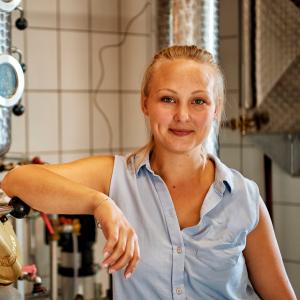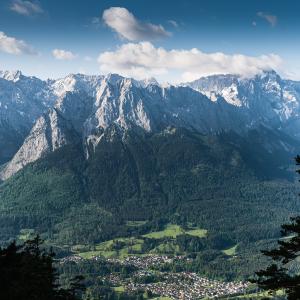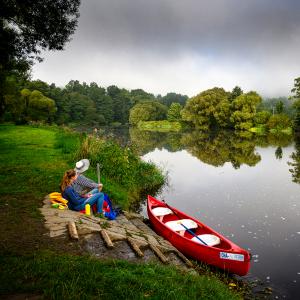The towns and cities in the Allgäu / Bavarian Swabia are lively and youthful, but they will also enable your customers to go on some eventful excursions back into the Middle Ages. And as you are about to read, they're full of really great superlatives and things and places worth seeing.
Augsburg: a city that's really been around
Your customers will be impressed by Augsburg's 2000-year history. When the city was founded, the Roman Emperor Augustus had a gigantic city wall built. 1500 years later, the merchant Jakob Fugger, who was – judging by today's standards – the richest person of all time, controlled the fortunes of the city. He also founded the world-famous Fuggerei, a settlement for Catholic citizens who had got into difficulties through no fault of their own. Tourists pay a visit to the little ochre terraced houses in the world's oldest subsidised housing settlement on almost every city tour. The Golden Room in the city hall, the monumental fountain, the Schaezler Palace and the St. Maria Cathedral – anyone who feels like a rest in Augsburg can simply relax in one of the cafés on the Rathausplatz and take in the splendour of it all. And that gurgling sound the water makes is just part of everyday life in Augsburg too. Many canals – spanned by more than 500 bridges – have been running through the town centre for centuries, while water towers rise up skyward. In 2019, indeed, this historical water management system became a UNESCO World Cultural Heritage Site. As for Augsburg's Puppet Theatre, it hasn't managed to achieve that distinction yet, but it is, nevertheless, renowned well out beyond the borders of the state.
Augsburg Tourism
Tel.: +49 821 50207-0
E-mail: tourismus@regio-augsburg.de
Füssen: mediaeval town among lakes, mountains and castles
On the one side two lakes, on the other the Alps, in between them the green River Lech, and next to that two castles of the fairy-tale king, Ludwig II. It's easy to understand why the town of Füssen, with its 15,500 inhabitants, is a magnet for those who travel to Bavaria. It doesn't just inspire people with its charming location, but also with its mediaeval urban architecture. Half-timbered buildings, baroque house façades, battlement walkways, towers, a town gate and the moat: the ensemble of the old town seems like a synthesis of the arts. Also in view, the world-famous Neuschwanstein Castle sits enthroned up on a rugged crag, 200 metres above. From 1869 onwards, King Ludwig II had his dream world built here. On the outside it looks like a mediaeval knight's castle, whilst on the inside it is fitted out sumptuously in the style of Romanesque, Gothic and Byzantine art. Ludwig grew up in the neo-Gothic Hohenschwangau Castle, not far from Neuschwanstein. Fascinating views of these two royal castles can be had from Füssen's bathing lakes, the Bannwaldsee and the Forggensee, the latter being Bavaria's largest reservoir.
Füssen Tourism
Tel.: +49 8362 9385-0
E-mail: tourismus@fuessen.de
Kempten: 2,000 years old, and yet so vivacious
Right in the middle of the Allgäu, framed by lush green hills, lies the former imperial, Celtic and Roman town of Kempten, which is among Germany's oldest settlements. In the ancient world, what is now the largest town in the Allgäu was known by the Roman name of Cambodunum. Today, in the Cambodunum Archaeological Park, your customers can still experience the way the Romans lived here in those times – and thanks to virtual reality they can almost do so at first hand, as it were. The modern Kempten Museum in the Zumsteinhaus also tells the story of the town from the times of the Romans to the present day. Kempten has always been a town of contrasts. For almost 600 years, the imperial town run by the bourgeoisie and the ecclesiastical town governed by the prince abbot developed quite separately. The juxtaposition of these two parts of the town over the centuries has left traces which your customers will be able to discover on a walk through this former dual municipality. Its image is marked by important historical monuments such as the baroque St. Lorenz Basilica, the prince abbot's residence with its magnificent staterooms, and the Gothic St. Mang Church. Apart from that, Kempten is a popular town in which to go for a stroll and enjoy some leisurely shopping. Today, there are little boutiques, traditional family businesses, well known fashion houses and a large shopping centre in mid-town, behind many of the historical façades.
Kempten Tourism
Tel.: +49 831 9609550
E-mail: info@kempten-tourismus.de
Lindau: mainland and island paradise on Lake Constance
Lake Constance at Lindau is regarded as the most beautiful part of Germany's largest lake. Beyond the opposite shore, the Alps rise up majestically, their peaks often covered in snow. The special thing about this town of 25,500 inhabitants is that only its old town is on an island. It is connected to the new town by a bridge. It all starts with the landmark of Lindau, the harbour entrance. Rising up to a height of six metres is the Bavarian Lion; on the other, the 33-metre New Lighthouse. Anyone climbing its 139 steps will be rewarded with a spectacular panorama of this island town, Lake Constance and the Austrian and Swiss Alps. The baroque town house known as the Haus zum Cavazzen on the marketplace is an eye-catcher too. Then, on to the 1000-year-old Church of St. Peter with its valuable frescoes by the great Renaissance painter Hans Holbein the Elder. And as for the best way of rounding off a day in Lindau, well, why not enjoy the flair of the town with a glass of regional wine on the lake promenade?
Lindau Tourism and Congress GmbH
Tel.: +49 8382 8899900
E-mail: info@lindau-tourismus.de
Memmingen: town of civil rights
850 Jahre Geschichte, mittelalterliche Prachtbauten und Deutschlands ältester Wehrgang: Memmingen war im 14. und 15. Jahrhundert von einer mächtigen Stadtmauer mit 7 Toren und 26 Türmen umgeben. Vieles ist bis heute erhalten, darunter auch der Hexenturm, ein ehemaliger Gefängnisturm. Auf zwei beschilderten Stadtspaziergängen – dem Roten und dem Grünen Weg – lassen sich die historischen Schätze, prächtigen Patriziergebäude, Kirchen und die gepflegten Parks im eigenen Tempo entdecken. Sie führen auch am Zunfthaus der Kramer am Memminger Weinmarkt vorbei. Hier versammelten sich 1525 aufständische Bauern, die von den Herrschenden Freiheit und Teilhabe forderten. Das Manifest mit zwölf Artikeln gilt als frühes Monument der deutschen Freiheits- und Verfassungsgeschichte. Eine moderne, abstrakte Skulptur des Bildhauers Andreas Brauneis erinnert an die Ereignisse. Noch mehr zeitgenössische Kunst? Die MeWo Kunsthalle gibt Einblicke in die lokale Kulturlandschaft. Ihre Kund*innen erreichen die Stadt ganz bequem über den Memminger Flughafen, der nur etwa 3 Kilometer außerhalb der Stadt liegt.
Memmingen Tourism
Tel.: +49 83 31 / 850–172 or -173
E-mail: info@memmingen.de
Nördlingen: a journey through time to the Middle Ages
Nördlingen is surrounded by Germany's only fully preserved town wall that can be toured all the way round on foot. From the fortifications, 2.7 kilometres in length, your customers will have a wonderful view out over the mediaeval lanes. The outlook from the 'Daniel', the bell tower of the late Gothic St. George's Church, is every bit as beautiful. From there, every evening, the guardian of the tower intones "So, G’sell, so" – "Aha, my friend, so that's what you're up to, is it?" – out over the town, just as the loden weaver's wife did in the Middle Ages when she saw the wild pig and the open gate. Another unique feature of Nördlingen is the Ries, a giant crater with a diameter of 25 kilometres, which was formed some 15 million years ago by the impact of a meteorite. The Ries Crater Museum narrates some exciting facts about that event and the repercussions it has continued to have right on into the present. One special way of exploring the crater is to go on the 'eavesdropping tour'. Thanks to the app, your customers will have their very own guide in their pocket and can listen to interesting information about the Ries as they go along.
Nördlingen Tourism
Tel +49 90 81 84116
E-mail: tourist-information@noerdlingen.de



